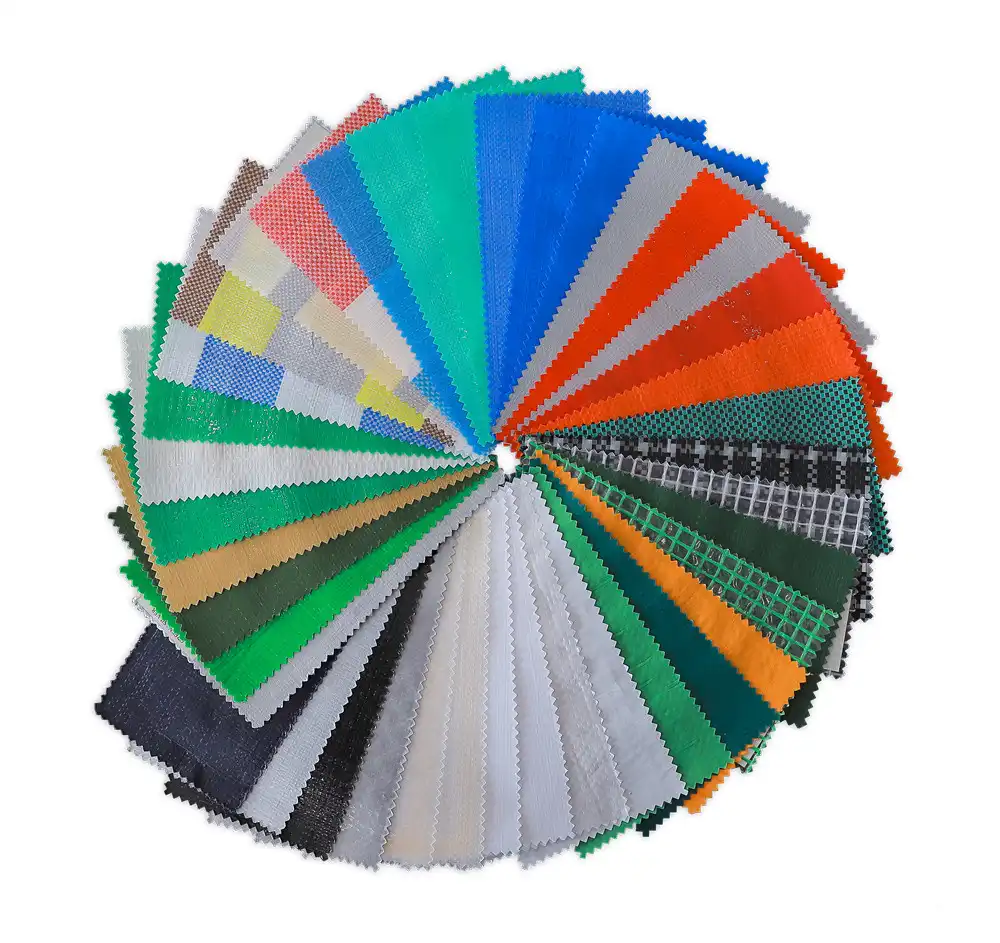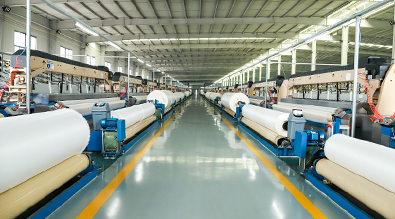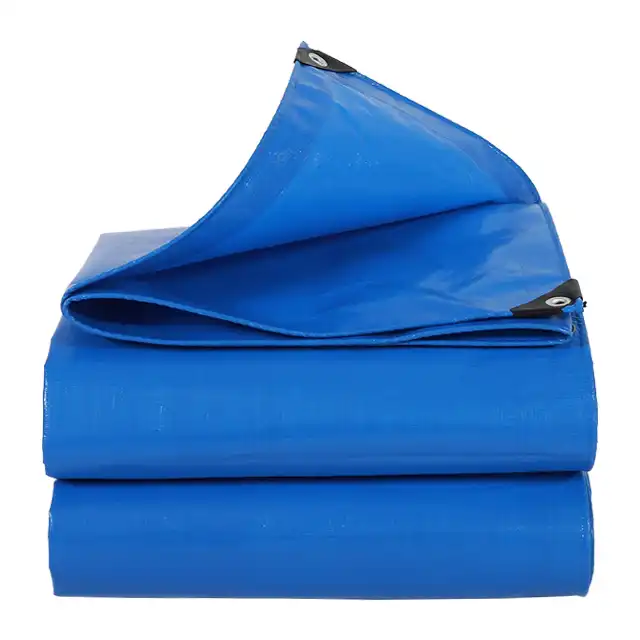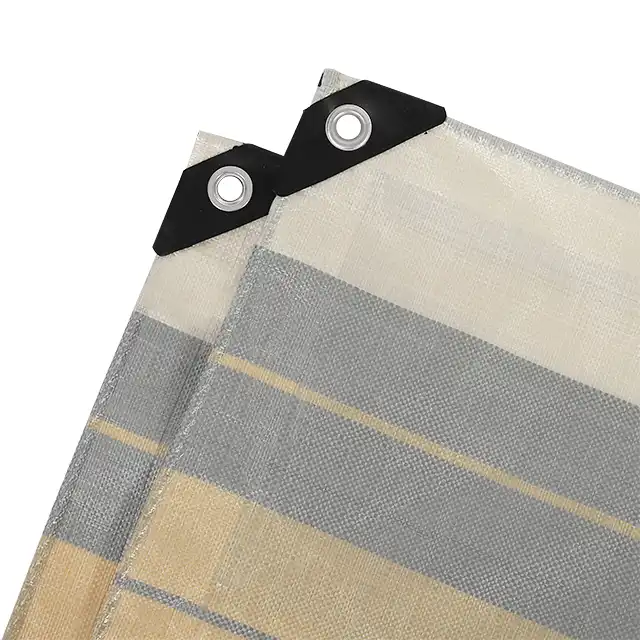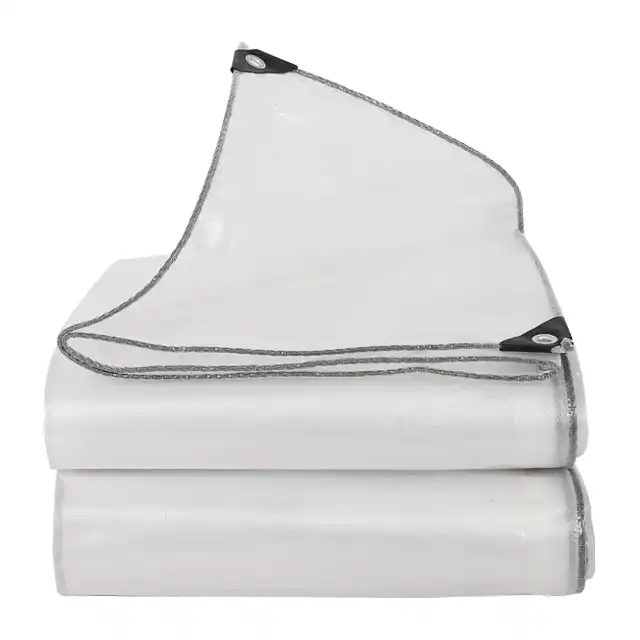Top Mistakes to Avoid When Using Tarpaulin Outdoors
When it comes to outdoor protection solutions, tarpaulins serve as essential barriers against harsh weather conditions, debris, and environmental damage. However, many users unknowingly make critical errors that compromise the effectiveness and longevity of their Outdoor Tarpaulin investments. Understanding these common pitfalls is crucial for maximizing protection while ensuring cost-effective usage. From improper installation techniques to neglecting material specifications, these mistakes can lead to significant property damage, premature tarp failure, and unnecessary replacement costs. By identifying and avoiding these errors, users can harness the full protective potential of high-quality polyethylene tarpaulins and achieve reliable, long-lasting outdoor coverage solutions.
Selection and Specification Mistakes
Choosing Inadequate Weight and Thickness Specifications
 The most fundamental error in Outdoor Tarpaulin selection involves choosing products with insufficient weight specifications for intended applications. A tarp that is too small will not adequately cover your pallets, leaving them exposed to the elements, while an oversized tarp can be cumbersome and difficult to manage. Professional-grade applications require tarpaulins ranging from 100gsm to 280gsm, with thickness specifications between 7-12 mil to ensure adequate durability. Heavy-duty polyethylene tarpaulins manufactured from high-density, tightly woven HDPE fibers provide superior resistance against tears, punctures, and weather-related deterioration. Users frequently underestimate the stress factors that outdoor environments impose on protective coverings, including wind loading, temperature fluctuations, UV exposure, and mechanical abrasion. Quality manufacturers implement strict mesh count standards ranging from 10x10 to 14x14, ensuring optimal balance between flexibility and structural integrity. The lamination process, involving LDPE coating on both fabric sides, creates waterproof barriers that maintain effectiveness under extreme conditions. Premium Outdoor Tarpaulin products incorporate UV treatment percentages between 1-7%, providing extended protection against harmful solar radiation that causes material degradation over time.
The most fundamental error in Outdoor Tarpaulin selection involves choosing products with insufficient weight specifications for intended applications. A tarp that is too small will not adequately cover your pallets, leaving them exposed to the elements, while an oversized tarp can be cumbersome and difficult to manage. Professional-grade applications require tarpaulins ranging from 100gsm to 280gsm, with thickness specifications between 7-12 mil to ensure adequate durability. Heavy-duty polyethylene tarpaulins manufactured from high-density, tightly woven HDPE fibers provide superior resistance against tears, punctures, and weather-related deterioration. Users frequently underestimate the stress factors that outdoor environments impose on protective coverings, including wind loading, temperature fluctuations, UV exposure, and mechanical abrasion. Quality manufacturers implement strict mesh count standards ranging from 10x10 to 14x14, ensuring optimal balance between flexibility and structural integrity. The lamination process, involving LDPE coating on both fabric sides, creates waterproof barriers that maintain effectiveness under extreme conditions. Premium Outdoor Tarpaulin products incorporate UV treatment percentages between 1-7%, providing extended protection against harmful solar radiation that causes material degradation over time.
Ignoring Material Compatibility and Application Requirements
Another critical specification error involves selecting tarpaulin materials incompatible with specific outdoor applications and environmental conditions. Different outdoor scenarios demand distinct material properties, chemical resistance levels, and performance characteristics that generic tarpaulins cannot provide. Construction sites require tear-resistant materials capable of withstanding sharp debris, heavy equipment contact, and prolonged exposure to industrial chemicals. Agricultural applications need breathable yet waterproof fabrics that prevent condensation buildup while maintaining crop protection. Marine environments demand salt-water resistant coatings and enhanced UV stability to prevent premature degradation. Professional Outdoor Tarpaulin manufacturers offer specialized formulations addressing specific industry requirements, including anti-freezing properties for cold climates, anti-corrosion treatments for industrial environments, and shrink-proof characteristics for dimensional stability. Arctic flexibility features enable reliable performance in extreme temperature ranges, while enhanced waterproofing systems provide 100% moisture protection. Users must carefully evaluate their specific application requirements against manufacturer specifications to ensure optimal material selection and performance outcomes.
Overlooking Size Accuracy and Coverage Planning
Inadequate size planning represents a costly mistake that compromises protection effectiveness while increasing material waste and installation complexity. Many people make this mistake because they forget to check the size of their poly tarps until they are just about to use them. Proper coverage planning requires accurate measurements of protected areas, consideration of overlap requirements, and allowance for securing mechanisms. Professional installations typically require 12-18 inches of overlap beyond protected perimeters to ensure complete coverage and proper anchoring. Modern manufacturing capabilities enable custom sizing up to 5.1 meters in width without joints, eliminating weak points and reducing installation complexity. Standard sheet sizes accommodate various applications, while roll configurations provide flexibility for large-area coverage projects. Quality Outdoor Tarpaulin suppliers offer made-to-order sizing services, ensuring precise fit and optimal material utilization. Color selection affects heat absorption, UV reflection, and aesthetic compatibility with surrounding environments. Proper size specification prevents material waste, reduces installation time, and ensures comprehensive protection coverage that meets specific project requirements.
Installation and Setup Errors
Improper Anchoring and Securing Techniques
Inadequate anchoring represents the primary cause of tarp failure in outdoor applications, leading to material damage, incomplete protection, and safety hazards. Please take care to avoid any sharp edges that could catch and potentially rip your tarpaulin. You should also be aware of contact spots or constant friction which could abraid or wear the material, thus reducing the lifespan of your cover. Professional installation techniques require strategic anchor point placement, appropriate hardware selection, and load distribution considerations. Bungee shock cord systems provide dynamic tension management, accommodating thermal expansion, wind loading, and structural movement without creating excessive stress concentrations. Metal grommets and reinforced eyelets distribute anchoring forces across larger material areas, preventing tear propagation and ensuring long-term durability. Proper anchor spacing, typically 18-24 inches between securing points, maintains uniform tension while preventing material sagging and water pooling. Quality Outdoor Tarpaulin products feature heat-sealed seams that provide superior strength compared to sewn alternatives, reducing failure risks at critical stress points. Edge reinforcement strips distribute loading forces and prevent progressive tearing from anchor points. Installation planning must consider seasonal variations, thermal movement, and dynamic loading conditions to ensure reliable performance throughout service life.
Creating Water Pooling and Drainage Issues
Water pooling represents a critical installation error that compromises tarp integrity and reduces protective effectiveness. If water is allowed to pool and collect on the tarp this will increase the stress on the eyelets, and on the heat sealed seams; this could cause the seams to split and allow water through. Therefore you should always position the sheet in such a way to allow excess water to drain off. Proper drainage design requires strategic slope creation, support structure placement, and tension management to ensure continuous water runoff. The most important thing you need to remember when tarping is that tarps, like shingled roofs, are not waterproof--they will only shed water. They will not resist pooled water for more than a few minutes. Professional installations incorporate ridge systems, intermediate support points, and perimeter drainage channels to manage water flow effectively. Temporary support structures prevent sagging that creates water collection points, while proper tensioning maintains optimal drainage angles. High-quality Outdoor Tarpaulin materials feature waterproof coatings and sealed construction that provide reliable moisture protection when properly installed. Drainage planning must account for rainfall intensity, surface area coverage, and runoff management to prevent structural overloading and material failure. Regular monitoring and adjustment ensure continued drainage effectiveness throughout changing weather conditions.
Neglecting Edge Protection and Wear Point Management
Edge protection and wear point management represent often-overlooked installation considerations that significantly impact tarp longevity and performance. Sharp edges, rough surfaces, and repetitive contact points create abrasion damage that leads to premature material failure and compromised protection. Professional installations incorporate edge padding, protective sleeves, and strategic positioning to minimize wear-related damage. Continuous friction from wind movement, thermal expansion, and structural contact creates progressive material deterioration that reduces service life. Quality Outdoor Tarpaulin products feature reinforced construction and durable coatings that resist abrasion damage, but proper installation techniques remain essential for optimal performance. Protective barriers, including foam padding, rubber strips, and fabric sleeves, prevent direct contact between tarp materials and abrasive surfaces. Strategic routing around sharp corners and projections reduces stress concentrations and prevents progressive tear development. Regular inspection and maintenance identify developing wear patterns before they compromise tarp integrity. Professional-grade materials offer superior tear resistance and puncture protection, but careful installation practices maximize these inherent protective characteristics.
Maintenance and Longevity Oversights
Inadequate UV Protection and Weather Resistance Planning
UV degradation represents the primary environmental threat to outdoor tarpaulin longevity, requiring proactive protection strategies and material selection considerations. Extended solar exposure breaks down polymer chains in tarpaulin materials, causing brittleness, color fading, and structural weakness that compromises protective capabilities. Professional-grade Outdoor Tarpaulin products incorporate specialized UV treatment systems, utilizing stabilizing additives and protective coatings that extend service life under harsh solar conditions. Treatment concentrations between 1-7% provide graduated protection levels appropriate for different exposure intensities and duration requirements. Quality manufacturers test UV resistance through accelerated weathering protocols, ensuring reliable performance predictions and service life estimates. Dark-colored tarpaulins absorb more heat and experience faster degradation compared to light-colored alternatives that reflect solar radiation. Proper installation includes consideration of shade structures, intermediate coverings, and seasonal rotation strategies that minimize cumulative UV exposure. Regular inspection identifies early degradation signs, enabling proactive replacement before protection compromise occurs. Advanced polyethylene formulations with enhanced UV stability provide extended service life in demanding outdoor applications while maintaining cost-effectiveness.
Neglecting Regular Inspection and Preventive Maintenance
Systematic inspection and preventive maintenance programs ensure optimal tarp performance while identifying potential issues before they compromise protection effectiveness. Regular visual inspections identify developing wear patterns, material degradation, anchor point stress, and environmental damage that requires corrective action. Monthly inspection schedules document condition changes and establish maintenance priorities based on observed deterioration patterns. Professional maintenance protocols include cleaning procedures, tension adjustments, anchor point reinforcement, and protective coating renewal as required. Accumulated dirt, debris, and biological growth create conditions that accelerate material degradation while reducing waterproof effectiveness. Proper cleaning techniques using appropriate detergents and equipment restore material performance without causing damage. Quality Outdoor Tarpaulin materials resist mildew and biological degradation, but regular maintenance prevents accumulation of damaging contaminants. Documentation systems track maintenance activities, inspection findings, and replacement schedules to optimize tarp management programs. Preventive maintenance costs significantly less than emergency replacement while ensuring continuous protection reliability throughout service life.
Failing to Plan for Seasonal and Environmental Changes
Seasonal variation planning represents a critical oversight that affects tarp performance and longevity throughout annual weather cycles. Temperature fluctuations cause thermal expansion and contraction that creates stress variations in installed tarpaulins, requiring tension adjustments and anchor point modifications. Winter conditions impose additional loading from snow accumulation, ice formation, and extreme temperature exposure that exceeds normal operational parameters. Professional installations incorporate seasonal adjustment protocols, including tension modification, additional support installation, and protective coating renewal. Wind loading patterns change seasonally, requiring anchor point evaluation and reinforcement as conditions demand. Quality Outdoor Tarpaulin products feature arctic flexibility characteristics that maintain performance in extreme temperature ranges, but installation modifications optimize protection effectiveness. Storm preparation includes securing procedures, temporary reinforcement installation, and rapid deployment strategies for emergency protection. Environmental monitoring systems track weather conditions and trigger appropriate protective responses before damage occurs. Comprehensive seasonal planning ensures continuous protection effectiveness while maximizing tarp service life through proactive management strategies.
Conclusion
Avoiding common tarpaulin mistakes requires careful attention to material selection, professional installation practices, and systematic maintenance approaches that maximize protection effectiveness while ensuring cost-efficient operation. Quality specifications, proper sizing, and expert installation techniques form the foundation for reliable outdoor protection systems that withstand challenging environmental conditions. Regular maintenance and seasonal planning extend service life while maintaining optimal performance throughout demanding applications.
When seeking professional-grade outdoor protection solutions, consider partnering with established manufacturers who understand these critical success factors. Linyi Shengde Plastic Co., Ltd., a leading China Outdoor Tarpaulin factory and China Outdoor Tarpaulin supplier, offers comprehensive expertise in professional tarpaulin manufacturing and application support. As a trusted China Outdoor Tarpaulin manufacturer with over 20 years of industry experience, we provide High Quality Outdoor Tarpaulin solutions with competitive Outdoor Tarpaulin price structures. Our extensive product range includes China Outdoor Tarpaulin wholesale options and premium Outdoor Tarpaulin for sale, backed by ISO 9001:2015 certification and partnerships with international organizations including UNHCR, IOM, ICRC, and UNICEF. Contact our technical experts at info@shengdetarp.com to discuss your specific outdoor protection requirements and discover how professional-grade tarpaulin solutions can address your most challenging application needs.
References
1. Johnson, R.K. "Polymer Degradation in Outdoor Applications: UV Stability and Weather Resistance in Synthetic Fabrics." Journal of Applied Materials Science, Vol. 45, 2023.
2. Chen, L.M. "Installation Best Practices for Heavy-Duty Protective Coverings: Load Distribution and Anchoring Systems." Construction Materials Engineering Quarterly, Issue 3, 2024.
3. Williams, P.D. "Maintenance Strategies for Outdoor Protective Systems: Preventive Care and Service Life Extension." Industrial Maintenance Technology Review, Vol. 28, 2023.
4. Thompson, S.A. "Environmental Loading Analysis for Temporary Structures: Wind, Snow, and Thermal Considerations." Structural Engineering Applications, No. 12, 2024.
